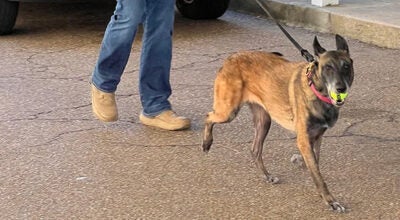Southern Miss professor helps lead historic shipwreck exploration teams
Published 7:18 am Sunday, July 7, 2019
A Southern Miss professor was the lead scientist of a nine-day expedition to research one of the deepest shipwrecks in the Gulf of Mexico.
“It was truly one of the most thrilling and ambitious projects I’ve ever been involved in,” said Leila Hamdan, an associate professor at the University of Southern Mississippi’s School of Ocean Science and Engineering. “Shipwrecks have a wonderful amount of history to them. It’s like a time capsule of history on the sea floor.”
USM and the Bureau of Ocean Energy Management (BOEM) worked together to discover and characterize two unexplored shipwrecks in the Gulf and study marine life on and around the wrecks.
Hamdan, who works out of the Gulf Coast Research Laboratory in Ocean Springs, said the expedition from June 24 through July 3 was a success.
The team included eight scientists from USM and the U.S. Naval Research Laboratory, two archaeologists from BOEM, four remotely operated vehicle (ROV) crew members, an outreach specialist from USM’s Marine Education Center and a middle-school teacher from the NOAA Teacher at Sea program.
Their first stop was site 157111. The shipwreck site was about 66 feet long and 33 feet wide. Among the artifacts they found were ceramic plates, glass bottles, jugs, an anchor, wire rope rigging and the ship’s bell. These are all clues that will help the archaeologists identify the date of the shipwreck.
“It’s like a dance. When we first dropped the ROV down, we were trying to figure out which way to move it, left, right, up or down. But after a few times, it’s like we’re ballroom dancing. It’s a great feeling, and that’s how we’re able to discover all of these artifacts,” said Hamdan.
She said they also found fish near the shipwreck.
“As soon as there’s a shipwreck, it get colonized by bacteria of all kinds, making it very sticky. After that, the fish and coral start to make an artificial home there. Seeing life there gives us more information on biodiversity shaping life in the deep ocean.”
Hamdan said Site 15470 is one of the deepest shipwrecks found in the Gulf of Mexico to date. The depth is about 5,700 feet.
The shipwreck site is about 100 feet long and 50 feet wide.
“It was truly one of the most beautiful sites I’ve seen on the sea floor. When we arrived on the sea floor via ROV, we were most likely the first light to shine on the area in 100 years,” said Hamdan.
At the site, they discovered bottles, plates and an area that was likely the ship store. They also found what they think is charcoal.
She says the next step for them is to start researching how old the shipwrecks are. Right now, they seem to be from the late 19th century, she said.
“We don’t know what they were doing. They might’ve been fishing vessels, might’ve been cargo vessels, but it’s very clear that both of them were sailing ships.”
These discoveries “will give all of us a better understanding of the cultural and economic past of maritime history,” Hamdan said.
“If we understand out past, we can understand our present and our future.”
The research will also explain how human-caused events like shipwrecks and underwater infrastructure like piping are changing the deep ocean.
“We need to know this information now, because if we don’t know what the deep-sea natural environment looks like now, we can’t predict how environmental change or human change will impact these places.”






